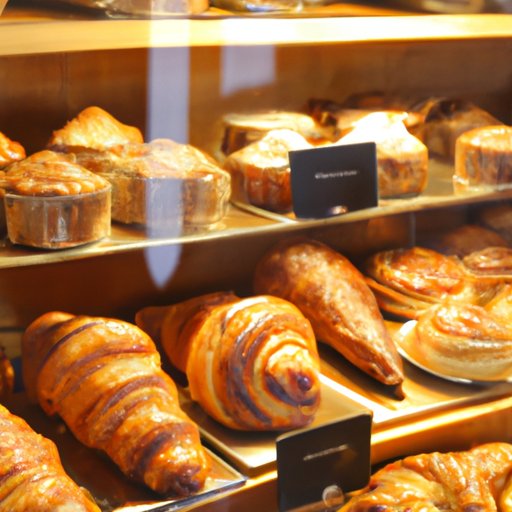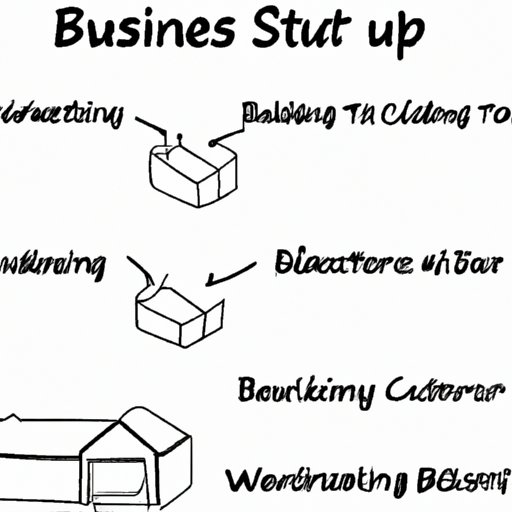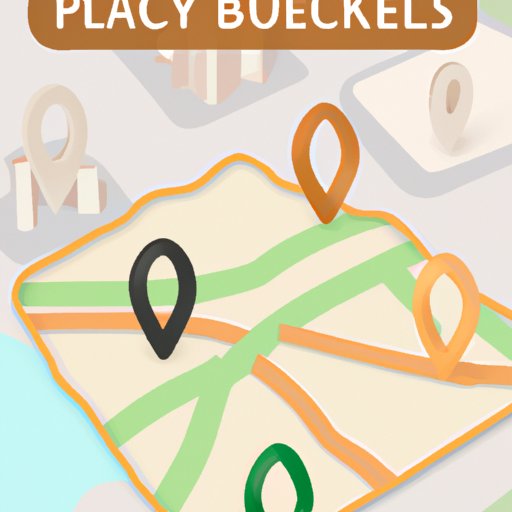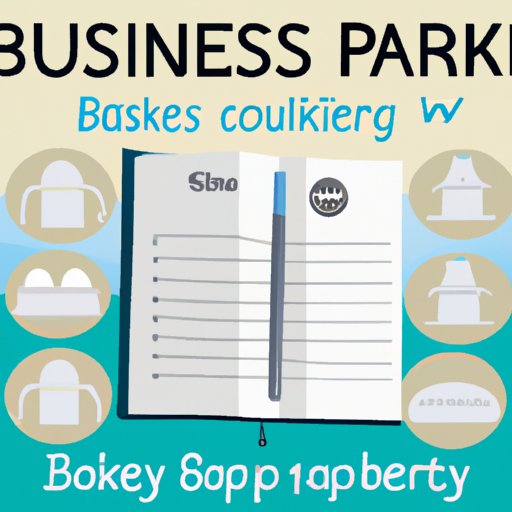Introduction
Starting a bakery business requires careful planning and research. You must create a business plan, understand local regulations and licensing requirements, secure financing, find the right location, and set up the kitchen and equipment. But before we dive into the specifics of each step, let’s take a look at the benefits of starting a bakery business.

Benefits of Starting a Bakery Business
There are several advantages of starting a bakery business. First, it can be very rewarding to run your own business and be your own boss. Additionally, you get to be creative in the kitchen and develop recipes that customers love. Finally, owning a bakery gives you the opportunity to build relationships with your customers.

Outline the Steps for Starting a Bakery Business
Now that you understand the benefits of starting a bakery business, let’s outline the steps for getting started.

Create a Business Plan for Your Bakery
The first step is to create a business plan for your bakery. This plan will serve as a roadmap for launching and growing your business. It should include information such as a competitive analysis, financial projections, and a marketing strategy.
To begin, you should research your competition. Look at what other bakeries in the area are offering, their prices, and any unique features they have. This will help you determine what makes your bakery stand out from the rest.
Next, develop financial projections. This includes estimating startup costs, researching potential funding sources, and developing a pricing strategy. It’s important to be realistic with your projections so you can make informed decisions.
Finally, choose your business structure. This will determine how you’re taxed, how much personal liability you have, and whether you need to register with the state or federal government.
Develop Your Bakery Menu
The next step is to develop your bakery menu. This is where you get to be creative and come up with delicious recipes that customers will love.
First, research what people want. Look at what types of baked goods are popular in your area and consider customer feedback. This will help you determine what items to include on your menu.
Next, test recipes. Try out different ingredients and techniques until you find something that works. Don’t be afraid to experiment and ask for feedback from friends and family.
Finally, choose what to sell. Consider factors such as cost, labor, and shelf life when deciding what items to offer. Also, think about seasonal specials and special occasion items.
Investigate Local Regulations and Licensing Requirements
You must also investigate local regulations and licensing requirements. These vary by state and county, so it’s important to do your research.
First, understand food safety standards. This includes learning about proper storage and handling procedures, as well as any health code regulations.
Next, obtain necessary permits. Depending on your location, you may need to apply for permits from the health department, fire department, and other local agencies.
Secure Financing to Start the Bakery
The next step is to secure financing to start the bakery. This includes estimating startup costs, exploring potential funding sources, and applying for loans.
First, estimate startup costs. This includes costs such as rent, equipment, supplies, and licenses. Calculate these costs based on your business plan and financial projections.
Next, explore funding sources. This could include grants, loans, and investors. Research all available options to determine which one is best for you.

Find the Right Location for Your Bakery
Once you have secured financing, you must find the right location for your bakery. This is an important decision that will impact how successful your business is.
First, consider foot traffic. Look for a location that has high visibility and is easily accessible. This will help draw customers in.
Next, analyze rental rates. Research the market to determine what is a fair price for the space. You don’t want to pay too much or too little.
Set Up the Kitchen and Equipment for Your Bakery
The final step is to set up the kitchen and equipment for your bakery. This includes purchasing kitchen supplies, hiring employees, and training them on safety and sanitation procedures.
First, purchase kitchen supplies. This includes items such as baking pans, mixers, ovens, and other tools. Make sure to buy quality products that will last.
Next, hire employees. If you plan to have a staff, look for experienced bakers and kitchen workers who can help you run the business. Train them on safety and sanitation procedures to ensure the highest quality of product.
Conclusion
In conclusion, starting a bakery business requires careful planning and research. There are several steps involved, from creating a business plan to understanding local regulations and securing financing. Additionally, you must find the right location and set up the kitchen and equipment for your bakery. By following these steps, you can create a successful bakery business.
(Note: Is this article not meeting your expectations? Do you have knowledge or insights to share? Unlock new opportunities and expand your reach by joining our authors team. Click Registration to join us and share your expertise with our readers.)
